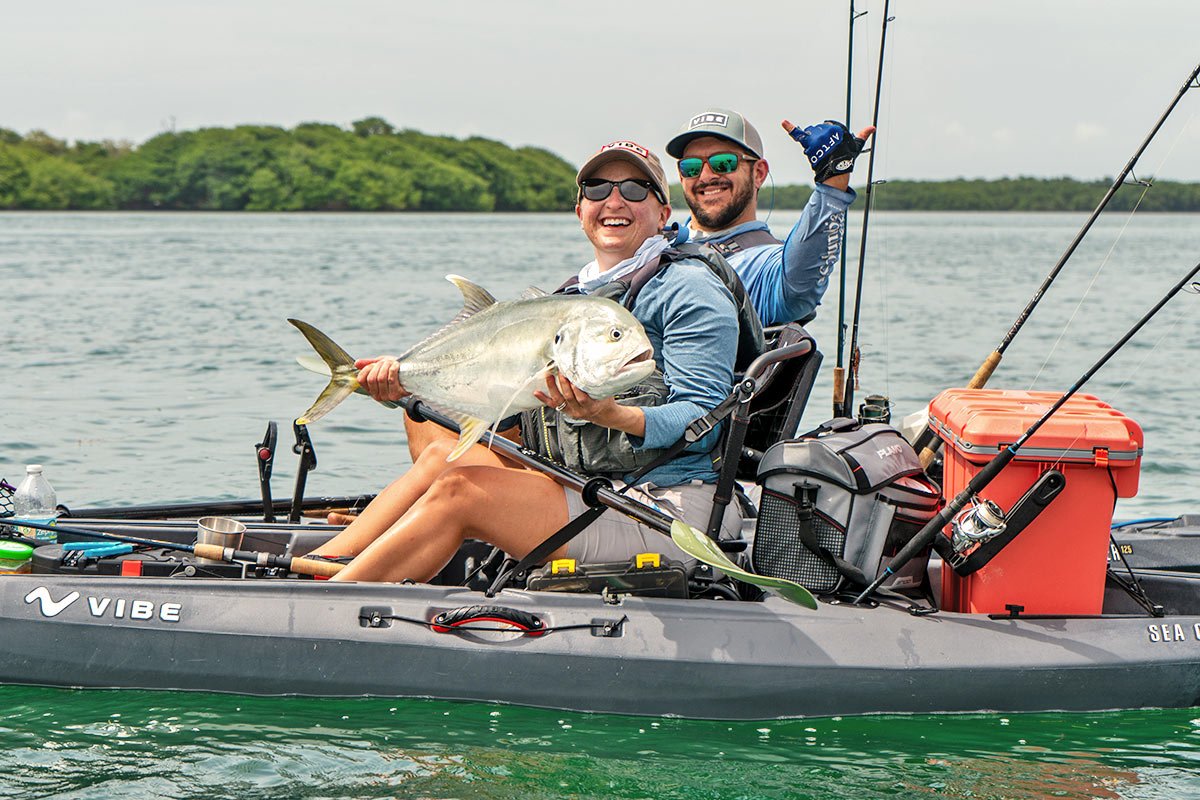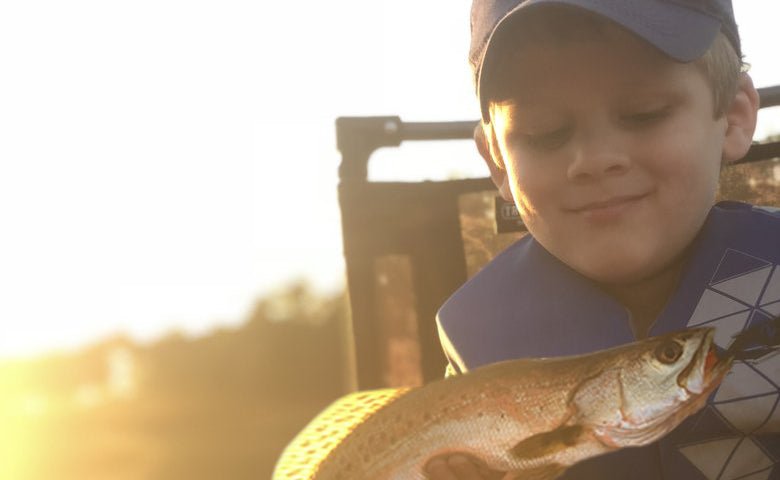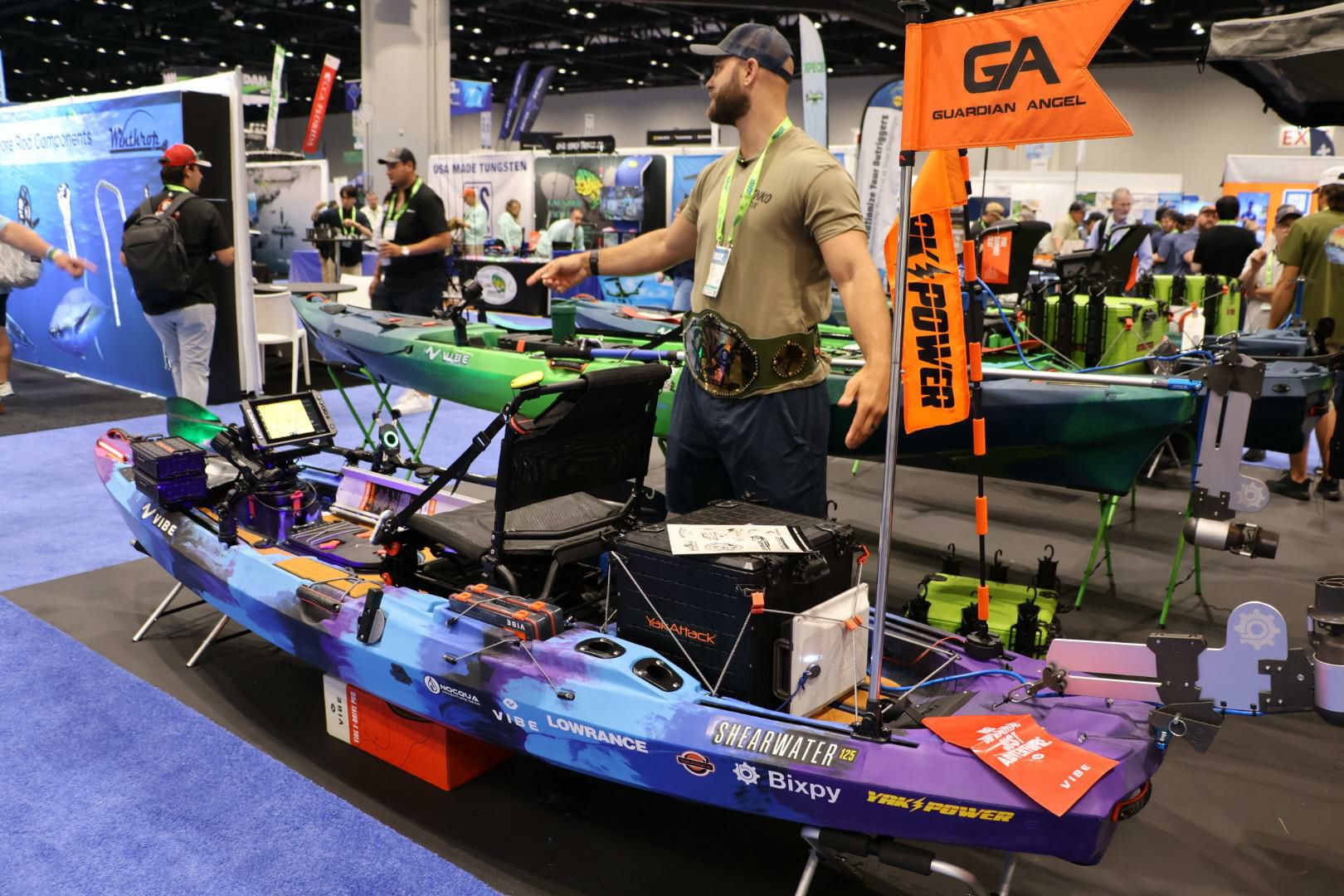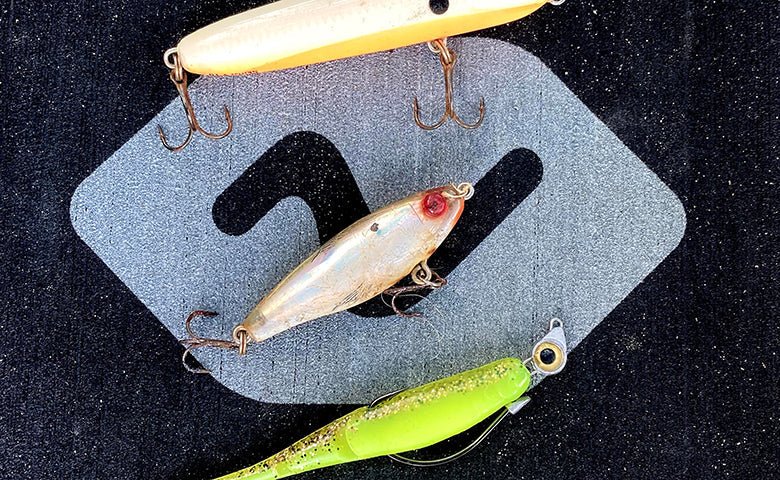How to Choose Safety Gear for Kayak Fishing

It's simple: Paddlers equipped with protective gear face less danger if they capsize than those who go without it. Make sure you have the right gear to keep you safe, and you'll spend less time worrying about "what might happen" and more time focused on paddling and fishing.
Here are some key basic tips and gear that it's smart to have should you ever encounter a mishap - which is really a matter of "when" not "if".
Basic Safety Gear
The bare minimum of basic safety gear for paddlers includes
PFDs:
Personal Flotation Devices (PFDs) are essential paddling safety items. They provide buoyancy to keep your head above water if you capsize. They can also make bracing, rolling and rescues easier by adding extra upward force when your upper body is in the water. In cold conditions, PFDs also provide an extra layer of insulation.
The United States Coast Guard requires that every boater carry an approved PFD. Make sure you wear yours at all times while paddling. They can be extremely difficult to put on after you capsize, especially if conditions are rough and you're already occupied trying to hold on to your boat and paddle.
First-Aid Kits
Of course, every paddling group should carry a first-aid kit. Paddling-specific kits are available, but your own homemade kit with the proper contents can be used as well.
Store your paddling first-aid kit in a clearly marked, waterproof bag (or box) in an easy-to-access spot in your boat. Medical emergencies demand quick responses; you don't want to have to dig through gear to find your first-aid supplies.
Basic Rescue Gear
Even the most prepared paddlers encounter unfavorable conditions that can result in mishaps. Knowing how to rescue yourself and other capsized paddlers is essential to safe boating. Wise paddlers carry and know how to use the following rescue gear:
Paddle Floats
After a capsize, a kayaker can reenter the boat either with the assistance of another paddler or, if no one is close enough, by performing a self-rescue. If a kayaker is in large open water or the ocean, a paddle float is the swimmer's best means of getting back into the boat alone.
Attached to the blade of the kayak paddle, the paddle float creates an outrigger to stabilize the kayak for re-entry. The swimmer puts the float over one blade (inflating it first, if bladder style). He or she then slides the other blade underneath the deck bungies (heavy elastic cords) behind the cockpit. Using the now-floating paddle blade for support, the kayaker hoists him- or herself onto the kayak deck and slides into the cockpit. There are two basic styles of paddle floats available to kayakers..
- Foam - These paddle floats are constructed of a block of closed-cell foam covered with nylon. The paddle blade is inserted into an outer sleeve, and the paddle is secured at the shaft with a nylon strap. Because of their quick assembly and possibly shorter time spent in the water, some paddlers prefer to use foam floats.
- Inflatable — Inflatable paddle floats are typically made of urethane-coated nylon. The paddler blows up an air bladder with a few puffs of air through a one-way valve, then proceeds with attaching it to the paddle as described above. Inflatable paddle floats offer better flotation than foam floats, making them a better choice for larger paddlers, but they require more time spent in the water to set up.
Tow Lines
Tow lines assist paddlers who are tired or injured. One end is attached to either the cockpit coaming (rim) or the waist of the towing paddler, and the other is clipped to the boat being towed. Some tow lines are also equipped with bags that allow them to be thrown to a capsized paddler.
Paddle Leashes
A paddle leash prevents your paddle from getting away from the boat—particularly important if you capsize. Leashes are typically made of elastic cord and attach to the boat in front of the cockpit. On sea kayaks, they are usually long enough to allow the paddle to be used as an outrigger with a paddle float.
Knives
Knives are necessary for cutting lines or straps. They are especially important in river rescues where a paddler can become entrapped in debris by the force of the current. The best have corrosion-resistant, stainless-steel blades. Blunt-tipped blades allow prying and prevent accidental punctures of inflatable kayaks or rafts. Knives with sheaths are easily attached to your PFD for quick access.
Communication Equipment
Communication equipment includes any gear used to make contact with other paddlers or vessels. It typically consists of radios and signaling devices.
Radios
Paddlers carry radios primarily to stay informed about the weather. When exploring the wilderness for days (or even weeks) at a time, weather patterns can change quickly. It is important to have a way to keep up with approaching conditions.
A number of compact, durable, weatherproof radio receivers are designed specifically to pick up around-the-clock weather updates. Other types of paddling radios include two-way VHF transceivers, which can be used to pick up weather reports and talk to other marine vessels, and EPIRBs (Emergency Position Indicating Radio Beacons).Once activated, EPIRBs send out emergency signals to monitoring agencies like the Coast Guard. These radios are more expensive than basic receivers and are more suited to paddling expeditions than short trips.
Signaling Devices
Signaling devices are items used to attract the attention of individuals who are too far away for voice communication. Your signaling equipment should reflect the specifics of your trip. For example, a loud voice, a brightly-colored PFD and a few pre-determined hand signals will take care of most short inland trips. But you may need a larger collection of signaling devices for long voyages, large bodies of water or challenging paddling conditions.
Because there's always the chance of becoming separated from your boat, it's good practice to carry a signaling device clipped to your PFD.
Whistles and Horns
These are useful when paddlers are within sight but not near enough for voice communication. They're inexpensive, easy to carry and use—and they're effective both day and night. Many paddlers consider whistles and horns to be standard paddling gear.
Flashlights and Strobes
Flashlights and strobes can be used to attract the attention of other paddlers and other vessels, especially in low-light situations. They can also be used to send specific messages (Morse code).
Signal Mirrors
Signal mirrors are best for situations when assistance is needed from farther away. They are easy to carry and easy to use, but are effective only during the day when the weather is clear.
Emergency Flags
Brightly colored emergency flags are designed to draw the attention of nearby paddlers or vessels. They are compact and easy to use, but they are effective only during daylight hours when conditions and visibility are good.



